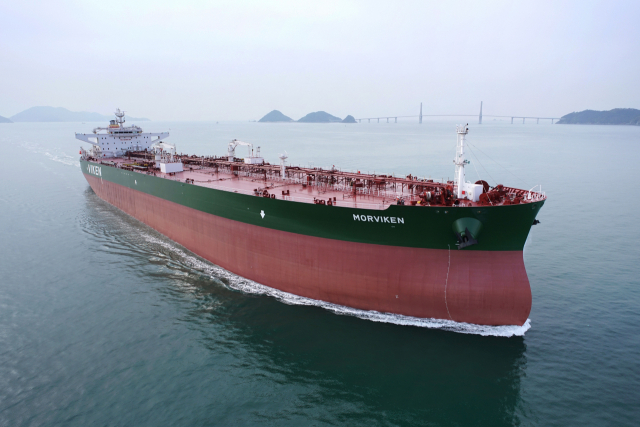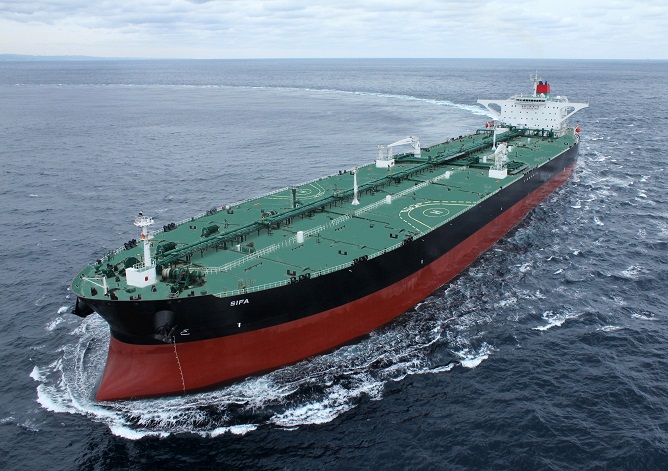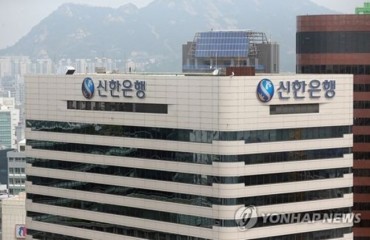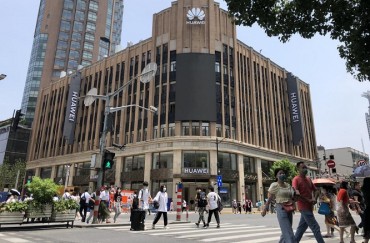
This photo, provided by Samsung Heavy Industries Co. on Nov. 17, 2020, shows a S-Max oil tanker built by the shipbuilder.
SEOUL, July 6 (Korea Bizwire) — South Korean shipbuilders saw their new orders rise over sevenfold in the first half of the year from a year ago, and they have achieved more than half of their annual order targets for the year, industrial data showed Tuesday.
During the January-June period, Korean shipbuilders bagged new orders totaling a combined 10.47 million compensated gross tons (CGTs), up more than seven times compared with 1.35 million CGTs the previous year, according to data provided by global market researcher Clarkson Research Service.
Chinese shipbuilders obtained 10.59 million CGTs in new orders during the same period.
CGT, the amount of work needed to build a ship, is used as a measurement to compare shipbuilding output. It is generally used to measure the volume of orders received.
The gap between South Koran shipbuilders and Chinese shipbuilders in terms of new orders during the first half is just 120,000 CGTs, which are equivalent to two 15,000 TEU container carriers.
The global new orders in the first six months of the year rose nearly threefold to 24.02 million CGTs, compared with 8.24 million CGTs a year ago, which is the highest level in seven years since 2014, the data showed.
South Korea’s new orders in the six months took up 43.6 percent of the total, with China accounting for 44 percent.
South Korean shipbuilding companies grabbed new orders for 16 LNG carriers, 42 oil tankers, 52 LPG carriers and 81 container carriers during the cited period.
In June alone, South Korean shipbuilders’ new orders surpassed their Chinese rivals.
Of the new orders for 131 ships, or 4.15 million CGTs, new orders for 40 ships, or 1.82 million CGTs, were obtained by South Korea, followed by China with 63 ships, or 1.57 million CGTs, and Japan with 14 ships, or 300,000 CGTs.
The global order backlogs, which refer to work waiting to be fulfilled, were up 1.73 million CGTs, or 2 percent, from a month ago to 80.91 million CGTs at the end of June.

This photo provided by Korea Shipbuilding & Offshore Engineering Co. on Feb. 22, 2021, shows a very large crude-oil carrier built by Hyundai Heavy Industries Co.
By country, China’s order backlogs came to 30.41 million CGTs, or 38 percent of the total, trailed by South Korea with 26.73 million CGTs, or 33 percent, and Japan with 8.66 million CGTs, or 11 percent.
Compared with a year ago, South Korea’s order backlogs rose 34 percent, with China up 8 percent. But Japan’s order backlogs fell 21 percent.
Clarkson’s Newbuilding Price Index, indicating price changes in newly built ships, continued to rise at a modest rate in June, reaching 138.5 points, which was up 14 percent since March 2017, when it hit 121.4 points.
Meanwhile, South Korean shipyards have achieved more than half of their annual target in the first half.
Korea Shipbuilding & Offshore Engineering Co. (KSOE), the top player, won new orders for 156 ships and two offshore plants worth a combined US$13.8 billion, accomplishing about 92 percent of its annual target of $14.9 billion.
The ships include 45 container carriers, 17 oil tankers, 30 petrochemical carriers, 15 LNG carriers, 45 LPG carriers, two bulk carriers, two Ro-Paxes and two offshore plants.
Ro-Pax, which is short for roll on, roll off passengers, is a ship built with passenger accommodation and freight vehicle transport facilities.
KSOE is the holding company of three shipbuilders — Hyundai Heavy Industries Co., Hyundai Samho Heavy Industries Co. and Hyundai Mipo Dockyard Co.
Daewoo Shipbuilding & Marine Engineering Co.’s first-half new orders worth $5.5 billion represented 71.4 percent of its $7.7 billion annual target.
The shipyard has won new orders for 38 ships, including 16 container carriers, 11 oil tankers, nine LPG carriers, one LNG carrier and one wind turbine installation vessel (WTIV), as well as one offshore plant — a floating production, storage and offloading vessel (FPSO).
Samsung Heavy Industries attained 65 percent of its $9.1 billion annual target, winning new orders for 48 ships, including 38 container carriers, seven oil tankers and three LNG carriers worth $5.9 billion.
(Yonhap)






